Myths, Spooky Stories & Folklore of Costa Rica
Table of Contents
Introduction
La Llorona (*Spooky for Halloween)
La Sihuanaba (*Spooky for Halloween)
Club Sport Cartaginés Curse of 1941
La Careta sin Bueyes (*Spooky for Halloween)
Myths of Semana Santa
The Mythology of Quetzals
La Mona (*Spooky for Halloween)
The Stone Spheres of the Diquís
El Cadejo (*Spooky for Halloween)
Río Celeste
The Fountain of Youth
The Old Woman’s Corner
The Haunted Asylum near Irazu Volcano (*Spooky for Halloween)
The Ruins of Cartago
There are many myths, stories and folkloric tales that come from Costa Rica, and the stories were told in common practice up until about twenty years ago with the advent of modernity.

Myths and folklore in Costa Rica can range from being rooted in traditional stories that are found in much of Central America to more modern tales of unusual, if not magical, happenings. There has been a curse on a soccer team, a magical blue river that is said to be made by the gods, a bird that has found itself in the folklore of the country for many years and still more.
Many tales of strange happenings occur in the middle of the night like that of a woman who stands by the road and lures strangers to pick her up only to terrify them later, or two dogs that pursue people into the night either for protection or for destruction. These bedtime stories were likely told to keep children from venturing out as a way of protecting them from some of the dangers that befall people in the night.
There are also tales that take place around the time of Semana Santa, which is essentially Easter weekend, and talk of supernatural happenings. The Roman Catholic faith in Costa Rica has in many ways mixed with the local beliefs, and the folklore of the people that originated in the area has always been somewhat intense.
The Stone Spheres of the Diquis, which are now recognized by the UNESCO World Heritage, are some of the oldest remains of the people and their unusual culture from the 3rd century AD (some of the spheres are not so old). The origins of the perfectly shaped spheres have left many to question how they came about, and there are several different theories, stories and ideas as to their origin, of course.
These stories and more make up the folklore of Costa Rica, and they add an element of the ephemeral world to any trip in Costa Rica. Whether you are on hike up the volcanic mountain of Rincon de la Vieja or heading to the Tenorio River, knowing a little about the wild stories of these special places in Costa Rica will certainly add to your experience in the land of the pure life.
La Llorona
The story of a bereaved woman who mourns for the loss of her children has passed through several different oral traditions around the world including that of Costa Rica.
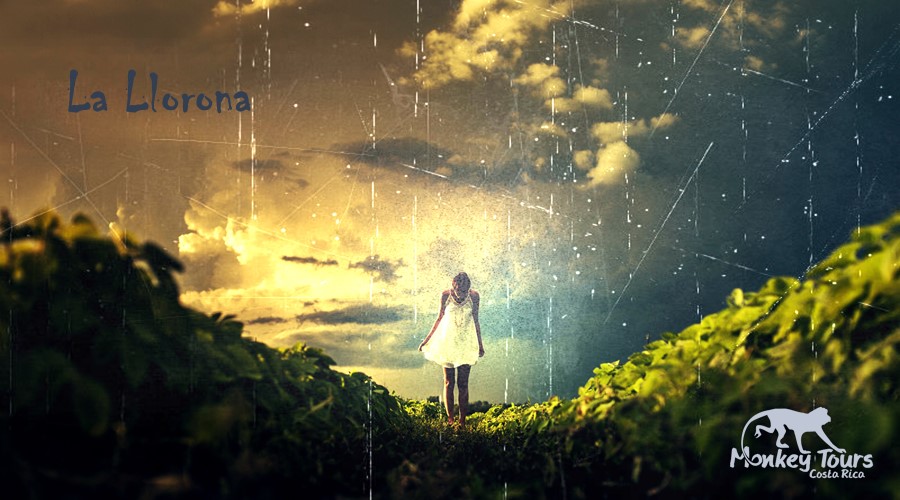
La Llorona is often compared to the story of the Banshee, which finds its origins in Irish folktales. The Banshee, however, differs in that the spirit incarnates when a person is about to die. La Llorona also bears the mark of being an omen of death, but that may not be the only time that the spirit appears in certain folktales. Banshees are not relegated to one spirit, also. The stories circulate with different banshees appearing at the time of death for varying families.
La Llorona, on the other hand, is said to have drowned her children after discovering that her husband had left her for another woman. In the legend, she takes her children to a river, and throws herself in once she realizes that she has killed her children. Upon reaching the gates of heaven, St. Peter questions her as to where her children are. She has no reply to give, so he sends her back to earth as a spirit to look for her children for eternity.
La Sihuanaba
La Sihuanaba is known by a few different names, but all of them depict a story of a beautiful girl who stands by the road late at night with a terrifying surprise for any who pick her up.

The Sihuanaba is another such tale where it seems to spring for a desire to strike fear into children, and thus keep them from heading out in the darkness of night. For a long time there wasn’t any artificial lighting on the streets in Costa Rica the same as so many other places in the world. This story, along with others like El Cadejo, were the best way to hold the curious natures of children at bay.
The story goes as such. In the early hours of the morning, before the sun has yet to rise, a beautiful young girl stands by the roadside. When passing young men stop to offer her a ride home, she is first reluctant. After a little persuasion, she accepts their kind offer only later to reveal that she is actually a demon with the face of a horse. The terror struck men who report seeing the sihuanaba are then permanently driven mad by the experience.
Club Sport Cartaginés Curse of 1941
The fútbol team of Club Sport Cartaginés has not won a national title since 1941, and it is believed that the team was doubly cursed due to some negative actions taken by the team.

The facts are clear. Club Sport Cartagines of Cartago, Costa Rica, has not won a national championship since 1941. What isn’t clear is the reason the oldest team in the Premier Division of Costa Rica has not been able to achieve success of the highest level in the league again. Some believe that a curse from both the local Basilica de Nuestra Señora de los Angeles, and a voodoo doll placed under the team’s home field may be the reason.
The two curses took hold at the same time and quite possibly for the same reason. After winning the national championship, some of the team members of Club Sport Cartagines road their horses into the cathedral at the Basilica of Our Lady of the Angeles in Cartago. The ramifications of their action were felt immediately as the father stationed at the church requested that they leave immediately, and some speculate that he may have also cursed them as they went out the door.
La Careta sin Bueyes
 La Careta Sin Bueyes, or the Oxcart without Oxen, is a story of Costa Rica that tells of an oxcart that shows up in the late hours of night or early hours of morning to collect the dead.
La Careta Sin Bueyes, or the Oxcart without Oxen, is a story of Costa Rica that tells of an oxcart that shows up in the late hours of night or early hours of morning to collect the dead.
The story of the oxcart without oxen may find its roots in Europe. Many stories from the time of the great plagues of Europe told about a man who would carry off the dead in a cart. Like the story of La Llorona, La Careta sin Bueyes forebodes of death coming soon. People might see the oxcart before the passing of a loved one.
Myths of Semana Santa
Semana Santa is not only associated with the death and subsequent return of Jesus Christ in what is known as Easter, but it is also known for some strange happenings in Costa Rica.
Semana Santa is known as Holy Week in English. It carries strange traditions in North America and England with children seeking candied and dyed eggs left by some magical giant bunny. It also carries with it strange traditions in Costa Rica. People in Costa Rica have associated certain superstitions with the holiday that center on swimming, land based activities and certain unexplainable phenomenon.
Some of the tales that come about during Semana Santa in Costa Rica include stories of mermaids grabbing swimmers as warning against entering the ocean at this time. Many people rush to the beach when the Semana Santa vacation kicks off, and often drink too much. Every year, people die in automotive accidents and water related accidents at this time of the year. The legend may have started much earlier, but it probably is a result of people losing their loved ones at this time of the year.
The Mythology of Quetzals
Resplendent Quetzals have long carried stories of the supernatural in Central America and Costa Rica, and the bird has often been called a god by various indigenous tribes.

The well-known tribes of Mexico and Central America, the Aztecs and the Mayans, both revered this sacred bird. In many legends, it was considered to be the god of the sky, and seeing it meant prosperity. It is no wonder that these beautiful birds were venerated as gods. They are striking in appearance, and somewhat mysterious in their behavior.
In Costa Rica, it is clear from some of the ancient artwork found that the birds held some place among the local indigenous tribes. Though, they may not have been as important to the local tribes as they were to the Aztecs and the Mayans. Resplendent quetzals no doubt played some role in the local mythology if only be means of sharing the traditions of nearby cultures.
La Mona
La Mona, sometimes known as the Warlock Mico, the witch Monkey or Mico Brujo, is said to terrify and accost victims with bloodcurdling screams from the treetops.
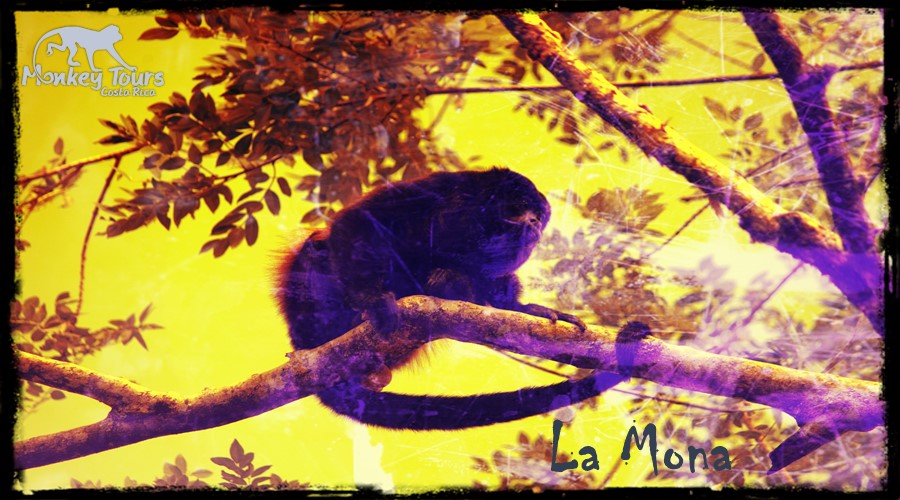
The myth likely comes from the very well-known screams of the tree top inhabitants; howler monkeys. Howler Monkeys get their name from the call that they make which is known to carry for quite a distance. These calls are actually made to other monkeys from the same group that are trying to locate the best leaves in the forest. The howls can be pretty scary when heard in the night or close to sunset, and this may have brought on the myth.
The Stone Spheres of the Diquís
There are several myths associated with some of the oldest relics of indigenous life ever found in Costa Rica, and they include stories of how the stones came to be among others.
The Stone Spheres of the Diquís have some of the most varied tales of how they came to be, what they were for, where they come from and treasures that are held in the center of the large cement spheres. Some believe that the stones hold gold, or sacred objects with other worldly power. Others believe that a single coffee bean was sown into the middle of the stones for some unknown reason. Several of the stones have actually been cracked apart to find what gifts the ancients left in their boulder sized stone time capsules.
Most of the stones are made from Gabbro, which is a solidified igneous rock, but some are made of limestone and other types of rock. That makes them quite difficult to break, but many over the years have accomplished the task in hopes of finding some treasure at the center of the enormous balls.
El Cadejo
The story of El Cadejo is framed around two dogs that show up in the night or the wee hours of the morning. One is black and one white, and they represent good and evil forces.

In certain tales, the white dog represents good and the black dog is an agent of evil, but that story can change with the white dog representing evil and the black being of pure qualities. Whatever the color, the emissary of good is said to watch over passers in the night as they make their way across the country landscape something like a guardian angel. The evil dog trails people and denotes that bad things may soon befall the unfortunate man or woman.
El Cadejo can go into the annals of stories that serve multiple purposes. They may raise awareness to the duality of life in general terms of good and evil or other opposing forces enacting on one other, but the real use of the story in Costa Rica before the advent of artificial lighting seems more apparent. The story, much like La Llorona or Sihuanaba, seems to spur from wanting to keep children from wandering away from the house at night.
Tales like El Cadejo and Sihuanaba help to keep the curiosities of children at bay when dangerous situations seem to be afoot. El cadejo may also help to assure that some are protected from some of the evils that may be afoot.
Myths of Río Celeste
Rio Celeste in Costa Rica is pretty well-known among visitors to Costa Rica, but many don’t know the creation story associated with how the river came to be.
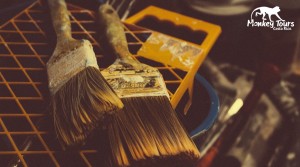
The indigenous people that lived in Costa Rica before the Spanish began their conquest of the area were most likely animists and spiritualists that believed in many other worldly things influencing the forests and its inhabitants. It is unclear what their hierarchy of Gods was, but many seemed to have a strong mythology attached to animals such as the Resplendent Quetzal and the Jaguar.
The story of how Río Celeste came to be finds its roots with sky gods. It could be that they viewed the sky gods as animals, or separate entities that populated other worldly places. The story itself is put into simple terms. It goes, “The gods must have dipped their paintbrushes in the river when they were painting the sky,” and its warranted due to the aquamarine tint of the river.
The Fountain of Youth in Cartago
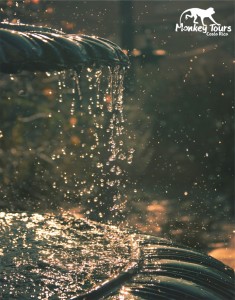 For many years there was a certain hot spring retreat in the province of Cartago, Costa Rica, which was believed to be the long sought after fountain of youth.
For many years there was a certain hot spring retreat in the province of Cartago, Costa Rica, which was believed to be the long sought after fountain of youth.
When the Spanish first began colonizing in the early 1600s, they happened upon this mountain spring near what is now Cartago city in Costa Rica. The spring was said to have miraculous healing properties, and many of the indigenous people living nearby would carry pouches with water and mud from the spring on long journeys as a way to combat any injuries received while trekking through the forests and mountains.
By the late 1800s, the spring had garnered an avid following of spa enthusiasts from Europe, and aristocrats from across the pond would head miles to Central America to treat their various ailments. The Bella Vista Resort was the most popular resort in all of Costa Rica at the time, and the water was examined by experts from major health spas in Europe. That all changed, however, when a major earthquake leveled many locations in 1910 causing immense devastation in the Province of Cartago primarily.
The hot springs of Bella Vista were mostly forgotten about, until an enterprising restauranteur from Israel found the remains of the springs a few years ago. The site where the springs were forgotten was actually a refuse collection area for some years after the earthquake of 1910. When Avraham Kotlitzky found the hot springs again recently, he had to dig through boards and old refuse to get back at the springs.
He now attests to the healing abilities of the water, and is building a new resort hotel on the land for others to come and rejuvenate themselves from the supposedly healing waters. Once again the surmised fountain of youth of Cartago will become a lavish center for people to come and experience the waters of the newly named Purapora Palace. The name Purapora was taken from the indigenous Huetar language, and the Huetar’s original capital was said to have been founded in the area (for the hot spring) hundreds of years before the Spanish arrived.
The new resort has not opened, yet. Only time will tell if the waters can truly heal ailments of the sick, and the reverse the effects of aging. Avraham certainly believes that the waters are truly beneficial.
The Old Woman’s Corner
Rincón de la Vieja translates as the old woman’s corner, and the story associated with how that name came to be is one filled with a tragedy and repentance.
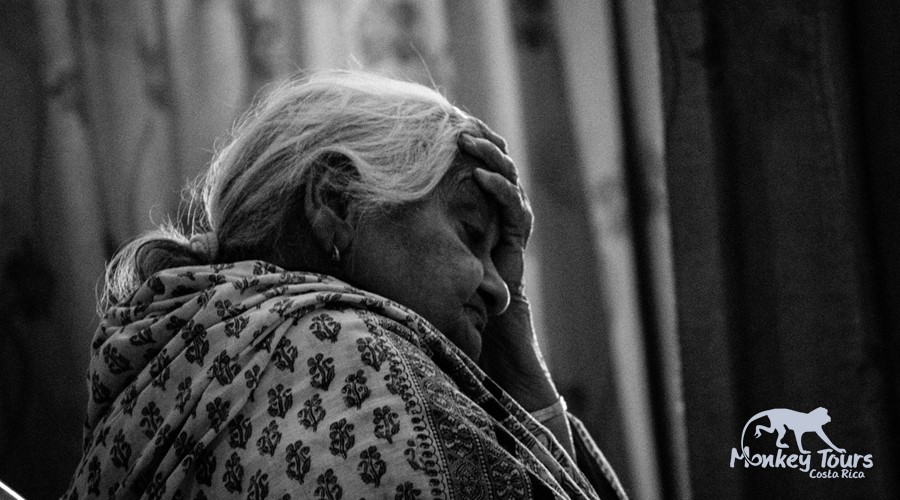
The story surrounding the naming of this large andesitic complex volcano come from the legend of a widow who lived nearby. She and her family moved to the area supposedly in the 19th century. After having lived there for some time, her husband and children went on a journey to one of the craters where they tragically lost their lives. The bereaved woman grew in fame as being both a healer, and one who warned travelers of the dangers of the volcano.
It is believed by some that the woman’s ghost still roams the mountain paths, and tries to help lost travelers as they make their way about through the forest. She is said to mostly be observed near the most active and highest crater of Santa Maria at the Rincon de la Vieja volcanic complex.
The Haunted Asylum near Irazu Volcano
The Duran Sanatorium lies in the foothills of the Irazu Volcano, Cartago Province, and the ghosts of bereft tuberculosis patients are said to still wander the halls.
This building went through multiple changes before officially closing its doors. It was at times an asylum, a prison and orphanage, but it was originally opened to treat patients suffering from tuberculosis by Carlos Duran. It was believed that the high mountain air might be beneficial for the malady of that time, but the remnants of that period seem to think otherwise.
Everything from a nun who wanders the halls of the sanatorium to ghostly apparitions of children laughing and playing among the emptied rooms of its halls are associated with the scary tales about the sanatorium now. If you think you have the courage to enter the sanatorium yourself, you can pay around $2 to take a tour.
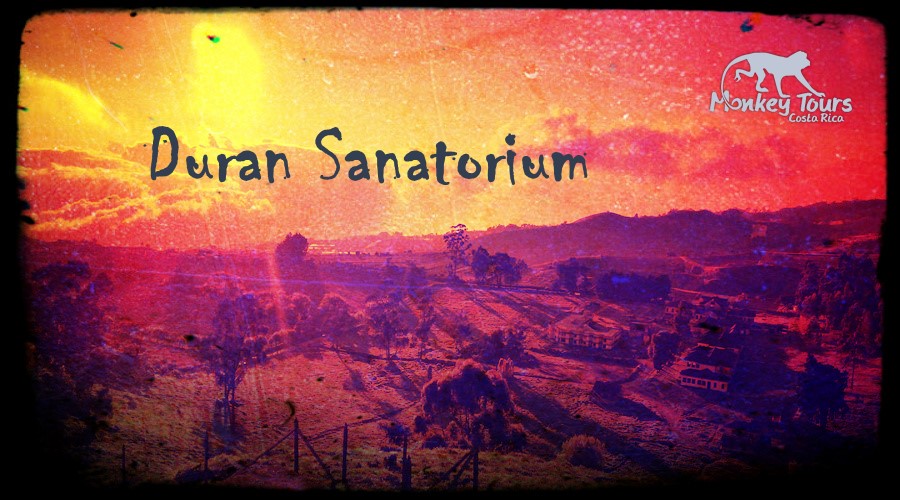
The Ruins of Cartago
A church that may have been cursed from the very beginning is how the ruins of Cartago came to be. The ground the church was built is believed to be tainted.
The church that remains only as a skeleton of a building now was destroyed twice by earthquakes. The first time was possibly associated with a blood feud among brothers and a woman who was married to one while the other tried to steal her away. The second earthquake happened in the middle of a rebuild, and now the church serves as one of the main hubs for bus traffic in the city of Cartago.
